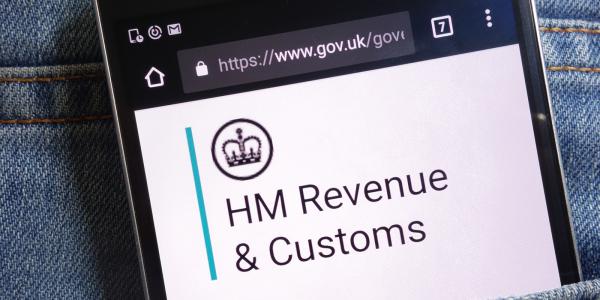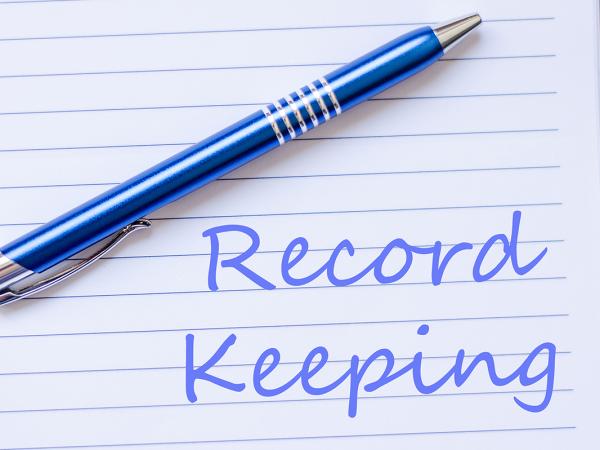Paying PAYE to HMRC
This page explains how to make the various payments that become due - including the amounts you have deducted from your employee under PAYE - to HMRC.

Content on this page:
General information
Employers normally have to make payments to HMRC by reference to 'tax months' (although many small employers will be able to use the ‘quarterly’ option – more on this under the heading Quarterly option below).
The tax months are:
| Month | Start | End |
| 1 | 6 April | 5 May |
| 2 | 6 May | 5 June |
| 3 | 6 June | 5 July |
| 4 | 6 July | 5 August |
| 5 | 6 August | 5 September |
| 6 | 6 September | 5 October |
| 7 | 6 October | 5 November |
| 8 | 6 November | 5 December |
| 9 | 6 December | 5 January |
| 10 | 6 January | 5 February |
| 11 | 6 February | 5 March |
| 12 | 6 March | 5 April |
Our payroll calendar can help you identify tax months (and quarters).
Payment must be received by HMRC by:
- the 19th, following the tax month in question, for those paying by post (a cheque for the total amount due for the month must be received by HMRC Accounts Office – more on this below).
- the 22nd, following the tax month in question, for electronic payments, e.g. direct debit, debit card, internet/telephone banking and Faster Payments (electronic payments do not have to be accompanied by a payment slip). You cannot pay with a personal credit card.
So, payments due for the tax month 6 June 2024 to 5 July 2024 should be paid by 19 July 2024 if paying by post and 22 July 2024 if paying electronically, and so on.
If the due date falls on a bank holiday or at the weekend, payment must be made on the last working day before it. HMRC may charge interest and penalties for late payments (see the heading Late or non payment below).
You can find more information on paying HMRC on GOV.UK.
If you don’t have any payment to make to HMRC for an entire tax month (or quarter) because you have not paid your employee anything, then you should let HMRC know by submitting an Employer Payment Summary (EPS) if you are an online filer or form RT5 – Employer Payment Summary, if you are a paper filer.
Quarterly option
Employers who expect their average monthly PAYE payment to be less than £1,500 may pay quarterly instead of monthly. If you qualify, HMRC will assume that you wish to pay quarterly unless you tell them otherwise. You can phone HMRC’s payment enquiry helpline if you want to do this.
The quarters are:
| Quarter | Start | End | Due date – cheque payers | Due date – Electronic payers |
| 1 | 6 April | 5 July | 19 July | 22 July |
| 2 | 6 July | 5 October | 19 October | 22 October |
| 3 | 6 October | 5 January | 19 January | 22 January |
| 4 | 6 January | 5 April | 19 April | 22 April |
How the payment is calculated
The payment that you need to make to HMRC will usually be calculated by adding together all of the following:
- the tax and employee's National Insurance contributions (NIC) you have deducted from your employees during the tax month (or quarter)
- student loan deductions you have deducted from your employees
- any employer’s NIC that is due from you (after taking into account the Employment Allowance)
You will then subtract from that total any statutory payments, for example Statutory Maternity Pay you are entitled to recover.
If you are an online filer, your payroll software should calculate how much tax and NIC to deduct from your employees’ pay, and then how much you need to pay HMRC (taking into account any reductions). If you are a paper filer then the tax and NIC totals will be on your RT11.
Users of HMRC’s Basic PAYE Tools (BPT) should check the user guide which contains step by step help on the most common functions of BPT, including on calculating the amount due to HMRC.
How to deal with negative balances
Sometimes, the amount that you owe HMRC for a period will come out as a negative amount. This can happen, for example, where you are claiming reimbursement of statutory parental payments you have made, or your employee is owed an in-year tax refund from HMRC based on his/her year to date pay and tax figures.
Typically, you would pay these amounts out to your employee in the first instance and then be ‘repaid’ by HMRC, by reducing any other amounts you need to pay over to HMRC for that same period. You can reduce your payment of tax, NIC or student loan deductions.
Where you only have one employee and you owe nothing else to HMRC for the same period, you would normally fund their tax refund by reducing your next payment to HMRC by the amount of the refund.
Paying class 1A/1B NIC
You must pay class 1A NIC on certain benefits and expenses. You pay class 1A NIC to HMRC separately to other amounts due under PAYE.
You need to pay these contributions by 22 July each year for the previous tax year. You’ll need to pay by 19 July if paying by post.
For more information, see GOV.UK.
For information on what happens if you are late paying class 1A NIC, see our dealing with PAYE errors page.
PAYE Settlement Agreement amounts (class 1B NIC) are also paid separately.
Paying by post
If you pay by post, you should:
- make your cheque payable to 'HM Revenue & Customs only'
- include the correct reference number on the back – see ‘Reference numbers’ below.
- send your cheque to HMRC using the pre-addressed envelope if you were sent one, or by using the address: HMRC, Direct, BX5 5BD
- not fold the cheque
Please allow at least three working days for the payment to reach HMRC to allow for any delays in the post. So, in order to make sure a cheque for the PAYE you owe reaches HMRC by the 19th May 2024 (which is a Sunday, so actually it needs to be with HMRC by Friday 17 May 2024 ), you should post it no later than Monday 13 May 2024 (the three working days being Tuesday 14th, Wednesday 15th and Thursday 16th).
HMRC used to provide pre-printed payment slips that came in a payment booklet. As confirmed in February 2024 Employer Bulletin, from 6 April 2024, these are no longer available.
You can find more about paying HMRC by post on GOV.UK.
You can also pay by cheque at your bank or building society, but you cannot pay at the Post Office.
Reference numbers
The reference number will consist of your 13 character Accounts Office reference. Depending on when you make your payment to HMRC, you may also need to tell them the year and the month you are paying. If you pay on time, HMRC will know where to allocate the payment, so strictly you do not need to tell them the year and the month (although if you want to, to be on the safe side, then that is fine).
HMRC consider an ‘on time’ payment as one that clears into their account between the 6th and the 22nd of the month following the end of the tax month to which it relates. If you are a quarterly payer (see heading above: Quarterly option), an ‘on time’ payment is one that clears into their account in the 2nd or 3rd tax month of the quarter, or between the 6th and the 22nd of the month following the end of the tax quarter to which it relates.
If you are paying late (or early) you will need to help HMRC understand where to allocate the payment by adding the year and month. You do this by adding 2 digits for the tax year, e.g. ‘25’ for 2024/25 tax year, ‘24’ for 2023/24 tax year and 2 digits for the tax month or quarter, e.g. ’01’ for month 1 (6 April to 5 May), ‘03’ for quarter 1 (6 April to 5 July) etc.
The easiest way to check you are using the correct reference is to use HMRC's online reference checker.
Please note: If you are paying class 1A NIC, the last two digits should always be 13. So continuing the example above, if that employer also needed to make a payment of Class 1A NIC for the tax year 2024/25, the reference would be 234MA000123452513.
Paying electronically
HMRC recommend that you pay electronically rather than by cheque, e.g. by debit card or via Faster Payments bank transfer. You can pay electronically even if you manage the rest of your payroll tasks manually (on paper). Provided you use the right reference number (see the Reference numbers section above), electronic payments are more efficient and secure than sending cheques by post.
If you are paying electronically, for some options like debit card, there is a question built into the paying portal ‘What period are you paying employers’ PAYE for?’ (with months and quarters as possible answers). This means that you don’t have to work out the actual reference number.
For further information on paying HMRC electronically, including their bank details, usual clearing times and how to check that a payment has been received, see GOV.UK.
Paying by direct debit
Since October 2022, you can pay employers’ PAYE by direct debit. You will need to set up the direct debit once and it will automatically collect PAYE payments in the future.
More details can be found on GOV.UK.
You will need to set it up at least 4 working days before your payment due date. Once set up, HMRC may take the direct debit after the 22nd of the month, however provided collection is successful, no late payment interest should be charged (although there have been a few teething problems with this).
Late or non-payment
You may have to pay late payment penalties and interest if you do not pay your PAYE tax/class 1 NIC etc. to HMRC on time and in full. Late payment penalties and interest apply to all employers.
HMRC interest rates are linked to the Bank of England base rate. As such, they are currently quite high. Late payment interest may now be a much bigger consideration when thinking about how much you owe to HMRC.
If you are having cash flow difficulties and know that you will not be able to pay what you owe HMRC on time or at all, you should contact HMRC as soon as you can. They may be able to arrange a payment plan with you (known as a time to pay arrangement).
You can now also set up a time to pay arrangement online provided you meet the following criteria :
- the PAYE debt must be less than £50,000 and the employer must not have any other payment plans or debts with HMRC
- plan to pay debt off within the next 12 months
- have debts that are 5 years old or less
- the debt must not include penalties or specified charges
- all returns must have been submitted.
You can read more on this on GOV.UK.
If you leave things until after you have missed a payment, you may have to talk with HMRC’s Debt Management team directly about next steps. Note that HMRC's Extra Support Team can deal with certain vulnerable employers and any issues they may be having in operating PAYE. So if you think you need this extra support, you should phone HMRC, explain your circumstances and ask to be passed to this specialist team to be dealt with.
If you do make a time to pay agreement, you may be able to avoid penalties for the particular period or periods covered, providing you keep to the terms of the arrangement. But you will still have to pay interest on any amounts paid after the year's end.
If an agreement is made, it is essential that you meet these payments in full and on time, otherwise your problems could significantly increase. HMRC could immediately cancel the arrangement if you default, calling in the total debt and applying a range of penalties.
For more information on what to do if you have difficulties paying HMRC, see GOV.UK.
You have paid HMRC the wrong amount
If you underpaid because you entered the wrong amount when paying HMRC, you should pay the balance as soon as possible.
If you overpaid because you entered the wrong amount when paying HMRC, or you made a duplicate payment, you can balance your account by paying less in your next PAYE bill.
Further information on what to do if you have paid HMRC the wrong amount can be found on GOV.UK.
For information on what to do if you make other types of mistakes when running your payroll, see our dealing with PAYE errors page.



